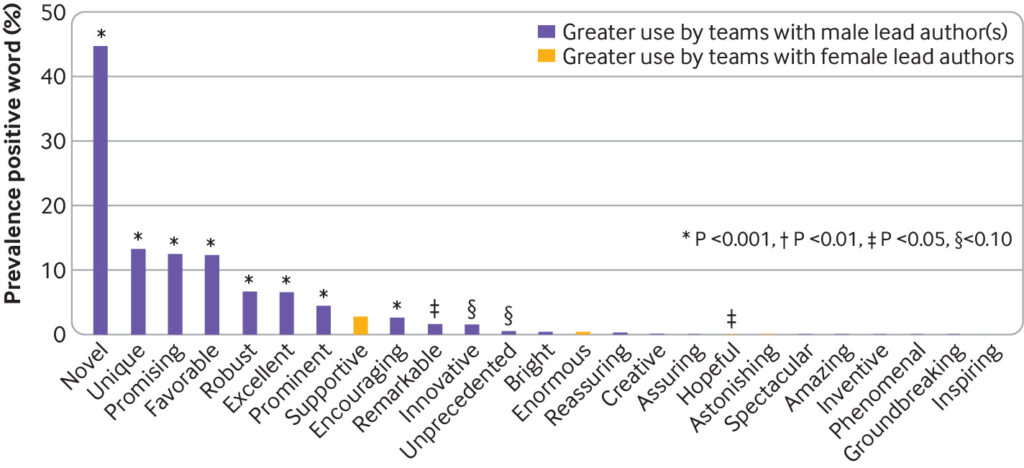Research Metrics: What Do They Actually Measure?

Figure 2 from Lerchenmueller, M.J., Sorenson, O., and Jena, A.B. (2019). Gender differences in how scientists represent the importance of their research: Observational study, BMJ, 367, l6573. Shared under a Creative Commons Attribution-NonCommercial 4.0 License (CC BY-NC 4.0).
Topics will include:
- Most common research metrics (Journal Impact Factor, h-index, etc.)
- Gender citation gap, gender self-citation gap
- Cite Black Women movement
- Altmetrics: what they do and don’t add to the picture
- Other types of impact, efforts to de-emphasize metrics
Assignments for June 21:
- Find a recent news article that references a research study. Has the study been published yet? Can you locate it? Can you access the full text (on publisher’s website, via the library, or via Google Scholar)? Does the news article accurately represent the study’s findings? Do you notice anything that the news article (or its headline) gets wrong? If so, do you think it’s an innocent error or a deliberate misrepresentation? Share what you found in the group forum.
- Respond the prompts about metrics in the group forum.
Readings/viewings for June 21:
Chapter 1: What is open access, from Suber, P. (2012). Open Access. MIT Press.
Wexler, E. (2015, November 5). What a mass exodus at a linguistics journal means for scholarly publishing. The Chronicle of Higher Education. Available via GC library.
Harris, S., Becerril García, A., Nkoudou, T. H. M., & Dandawate, V. (2021, May 13). Global trends in open access: Themes from Africa, Asia and Latin America. Scholarly Kitchen.
Pia, A., Batterbury, S., Joniak-Lüthi, A., LaFlamme, M., Wielander, G., Zerilli, F., Nolas, M., Schubert, J., Loubere, N., Franceschini, I., Walsh, C., Mora, A., & Varvantakis, C. (2020). Labour of love: An open access manifesto for freedom, integrity, and creativity in the humanities and interpretive social sciences. Commonplace.
Optional: Moore, S. (2019). Revisiting ‘the 1990s debutante’: Scholar-led publishing and the pre-history of the open access movement (postprint). Journal of the Association for Information Science and Technology, 2019, 1–11.


